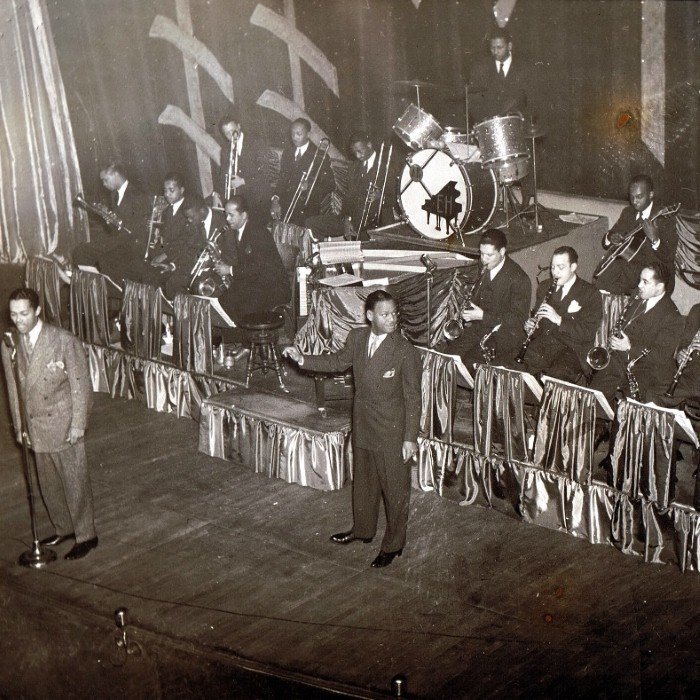Members
1
Origin
---
Genre
---
Style
---
Mood
---
Active
 0 to Present...
0 to Present...
Cutout

1
Origin
---
Genre
---
Style
---
Mood
---
Active
Cutout
No loved tracks found...
Artist Biography
Available in:
The Hines band usually comprised 15-20 musicians on stage, occasionally up to 28. Among the band's many members were Wallace Bishop, Alvin Burroughs, Scoops Carry, Oliver Coleman, Bob Crowder, Thomas Crump, George Dixon, Julian Draper, Streamline Ewing, Ed Fant, Milton Fletcher, Walter Fuller, Dizzy Gillespie, Leroy Harris, Woogy Harris, Darnell Howard, Cecil Irwin, Harry 'Pee Wee' Jackson, Warren Jefferson, Budd Johnson, Jimmy Mundy, Ray Nance, Charlie Parker, Willie Randall, Omer Simeon, Cliff Smalls, Leon Washington, Freddie Webster, Quinn Wilson and Trummy Young.
Occasionally, Hines allowed other pianists to play as "relief" piano player which better allowed Hines to conduct his whole "Organization". Jess Stacy was one, Nat "King" Cole and Teddy Wilson were others (though Cliff Smalls was his favorite).
Each summer, Hines toured his whole band for three months, including through the South – the first black big-band to do so. He explained, " we traveled by train through the South, they would send a porter back to our car to let us know when the dining room was cleared, and then we would all go in together. We couldn't eat when we wanted to. We had to eat when they were ready for us."
In Duke Ellington's America, Harvey G Cohen writes:
... In 1931, Earl Hines and his Orchestra "were the first big Negro band to travel extensively through the South". Hines referred to it as an "invasion" rather than a "tour". Between a bomb exploding under their bandstage in Alabama (" ...we didn't none of us get hurt but we didn't play so well after that either") and numerous threatening encounters with the Police, the experience proved so harrowing that Hines in the 1960s recalled that, "You could call us the first Freedom Riders". For the most part, any contact with whites, even fans, was viewed as dangerous. Finding places to eat or stay overnight entailed a constant struggle. The only non-musical 'victory' that Hines claimed was winning the respect of a clothing-store owner who initially treated Hines with derision until it became clear that Hines planned to spend $85 on shirts, "which changed his whole attitude".
Wide Thumb
Clearart
Fanart

Banner
User Comments
 No comments yet..
No comments yet..